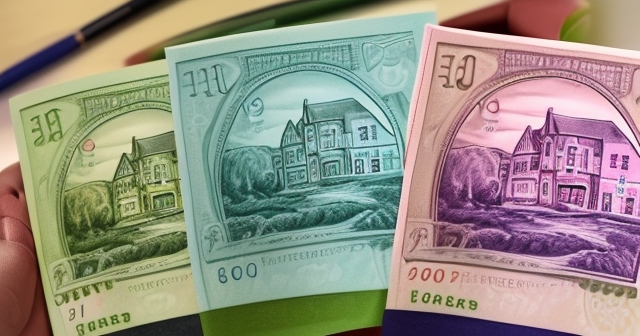Understanding the Guernsey Pound: A Journey Through Design, Security, and Economic Policy
Welcome, fellow explorers of the financial world! Today, we’re setting our compass towards a fascinating corner of the global economy – the island of Guernsey and its unique currency, the Guernsey Pound (GGP). While perhaps not as widely discussed as the major global currencies, the GGP has a rich history and is currently undergoing significant evolutions, from striking new banknote designs that celebrate the island’s identity to critical adjustments in economic policy like the minimum wage. Understanding currencies like the GGP gives us valuable insights into the economies they represent, the policies that govern them, and even the artistry and technology involved in their creation. So, let’s embark on this journey together, peeling back the layers to understand what makes the Guernsey Pound more than just coins and paper.

Every nation’s currency tells a story about its past, its present, and its aspirations for the future. The Guernsey Pound (£) is the official currency of the Bailiwick of Guernsey, a self-governing British Crown Dependency. Its currency code is GGP, and it follows the familiar decimal system, divided into 100 pence (p). You’ll commonly encounter coins in denominations of 1p, 2p, 5p, 10p, 20p, 50p, £1, and £2, alongside banknotes of £1, £5, £10, £20, and £50.
- The Guernsey Pound is tied closely to the British Pound Sterling.
- It issues its own banknotes and coins that circulate at par with Sterling in Guernsey.
- GGP notes and coins are not legal tender in the UK but are accepted in some locations.
Historically, the GGP has been closely tied to the British Pound Sterling (GBP). While not a separate currency on the foreign exchange market in the same way as, say, the Euro or the US Dollar, Guernsey issues its own banknotes and coins. These are legally distinct from Bank of England notes and coins, although in practice, they circulate at par with Sterling within Guernsey. A critical point to remember is that GGP notes and coins are *not* legal tender in the United Kingdom, though you might find them accepted in some places due to the close relationship. Conversely, Bank of England notes are widely accepted in Guernsey, although they are technically not legal tender there either – a fascinating nuance of Crown Dependencies!
The total value of Guernsey currency currently in circulation stands at approximately £51 million. This figure provides a snapshot of the scale of the cash economy within the island. For visitors and collectors, Guernsey’s distinct currency adds another layer of interest to the island’s charm. But beyond its current form, the GGP is on the cusp of a major transformation, starting with its visual identity.
Charting a New Course: Guernsey’s Future Banknote Designs Unveiled
Currencies aren’t static; they evolve, often reflecting societal changes, technological advancements, and national identity. Guernsey is preparing for a significant leap forward with the planned introduction of a new family of polymer banknotes. This isn’t just a material change; it’s a complete redesign that speaks volumes about the island’s desire to feature its unique character prominently.
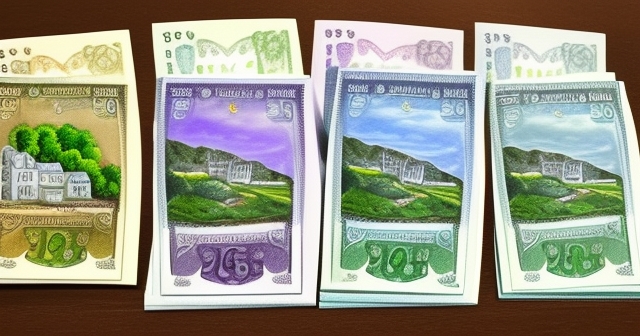
The States of Guernsey, the island’s government, has approved designs for new £1, £5, £10, and £20 polymer notes. These notes are expected to begin entering circulation in 2027. The move to polymer is a global trend driven by the material’s durability – notes last significantly longer than paper – and enhanced security features. But what truly sets these upcoming Guernsey notes apart is their deliberate focus on telling the island’s own story.
| Denomination | Expected Circulation Year |
|---|---|
| £1 | 2027 |
| £5 | 2027 |
| £10 | 2027 |
| £20 | 2027 |
Imagine a banknote as a miniature canvas, a portable gallery showcasing the essence of a place. The new GGP designs aim to do just that, shifting the focus squarely onto Guernsey’s distinctiveness. This involves a thoughtful selection of imagery and a significant departure from previous traditions, a decision that has garnered considerable attention both on and off the island.
The Design Philosophy: Local Identity Over Monarch
One of the most striking decisions regarding the new Guernsey banknotes is the conscious choice to omit the portrait of the reigning British monarch, King Charles III, from the main design. Previous series, including the current cotton notes, featured the portrait of Queen Elizabeth II. This change marks a significant moment in the visual representation of the GGP.
The stated reasoning behind this decision is to make the notes “purely about Guernsey and more timeless.” By featuring only elements specific to the island – its natural beauty, built heritage, unique flora and fauna, and historic structures – the designs aim to create a lasting representation of Guernsey that transcends the lifespan of any single monarch’s reign. It’s a powerful statement about identity and self-reliance, portraying Guernsey as a place with its own rich narrative, independent of external figures.
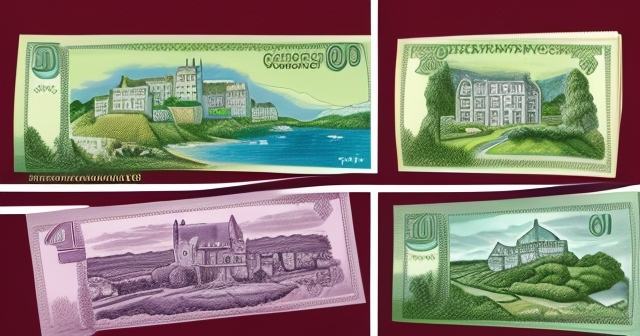
This design philosophy ensures that each note becomes a miniature window into the island’s soul. The planned imagery includes stunning depictions of Guernsey’s diverse landscapes, from rugged coastlines to tranquil valleys, iconic buildings that dot the towns and parishes, and glimpses of the island’s unique biodiversity. It’s a move that resonates with a desire to celebrate local heritage and create a currency that is immediately and undeniably ‘Guernsey’.
Artists Behind the Vision: The Open Call Process
Who brings these visions to life? To ensure the designs truly captured the spirit of Guernsey, the States of Guernsey initiated an open call for design submissions. This inclusive approach allowed local artists to contribute their perspectives and talents, ensuring the final selections were deeply rooted in the island’s creative community.
Following a competitive process, designs submitted by three talented artists were selected to form the basis of the new banknote series. These artists are Hayley Mallett, Rachael de la Mare, and Natasha K.HE. Their winning submissions interpret Guernsey’s landscape, history, and nature through their individual artistic styles, promising a diverse and visually engaging series of notes.
| Artist | Contribution |
|---|---|
| Hayley Mallett | Interpretation of Guernsey’s natural beauty |
| Rachael de la Mare | Focus on historical imagery |
| Natasha K.HE | Representation of unique flora and fauna |
The open call process itself speaks to a commitment to involving the community in the creation of its national symbols. It wasn’t a top-down directive but an invitation for islanders to contribute to how their currency would look for decades to come. While the initial designs have been selected, plans are also in place for further community involvement opportunities, allowing the public to provide feedback as the designs are finalised and prepared for production. This level of engagement further strengthens the connection between the currency and the people who use it daily.
The Journey to Polymer: Why 2027 and What to Expect
Switching to polymer banknotes is a significant undertaking, involving not just design but also complex production processes and logistical planning. The targeted circulation date of 2027 provides the necessary time to move from selected designs to finished, secure notes ready for the public. Polymer offers several advantages over traditional cotton-based paper notes.
- Durability: Polymer notes are significantly more resistant to tearing, creasing, and moisture.
- Security: Polymer substrate allows for the integration of advanced security features.
- Player-centric Design: Gives users a better understanding of currency handling through visible features.
Firstly, durability. Polymer notes are significantly more resistant to tearing, creasing, and moisture. They last much longer in circulation, reducing the frequency and cost of replacement. Think about the wear and tear your current notes endure; polymer is designed to withstand much more. This means a cleaner, newer-looking currency in our wallets for longer periods.
Secondly, security. Polymer substrate allows for the integration of advanced security features that are difficult to replicate. While we’ll delve deeper into security in the next section, the material itself provides a different base for these features compared to paper. This enhances the overall integrity of the currency and makes it harder for counterfeiters to succeed.
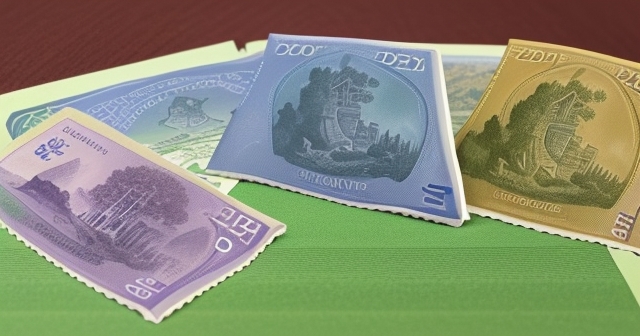
As 2027 approaches, we can expect to see more previews of the final designs and potentially public awareness campaigns explaining the new features and how to handle the polymer notes. The transition will likely involve a period where both the existing cotton notes (which remain legal tender) and the new polymer notes circulate alongside each other, similar to how currency updates are managed elsewhere. This ensures a smooth changeover for businesses and the public alike.
Fortifying the Fabric: Enhanced Security Features on Existing Notes
While the focus is on the future with polymer, the States of Guernsey hasn’t neglected the security of the *current* cotton paper banknotes. In an ongoing effort to maintain the integrity of the currency and combat counterfeiting, new, innovative security features have been introduced to the existing £5, £10, and £20 notes.
These updates were developed and produced in partnership with De La Rue, a company with a long and significant history in banknote printing, dating back to its founder, Thomas De La Rue, who was born in Guernsey. This enduring relationship highlights a deep-seated expertise that the island leverages in securing its currency. The introduction of these advanced features demonstrates a proactive approach to currency security, ensuring that the notes we use today are as safe and verifiable as possible.
These enhanced security elements are designed to be easily recognisable by the public, providing simple methods to check a note’s authenticity with just a quick tilt or look. This ease of recognition is key to public confidence and serves as a powerful deterrent to those who might attempt to pass counterfeit notes. The updated notes with these new features are already in circulation and will co-exist with older versions until those naturally wear out and are withdrawn.
Deep Dive into Security Tech: PUREIMAGE™, IGNITE®, NEXUS™
Let’s look closer at the specific security features incorporated into the recent updates of the existing £5, £10, and £20 Guernsey banknotes. These aren’t just simple watermarks; they are examples of cutting-edge technology in banknote security:
- PUREIMAGE™: This likely refers to an advanced watermark or security thread that creates complex, clear images or patterns when viewed under transmitted light or at an angle. Such features are notoriously difficult for counterfeiters to replicate with standard printing methods.
- IGNITE®: This term suggests a feature that exhibits vibrant, perhaps colour-shifting or dynamic, visual effects when the note is tilted or viewed under different light sources. Features like this, often integrated into threads or patches, add a strong visual layer of security that is hard to forge accurately.
- NEXUS™ embedded stripe: An embedded stripe is a common security feature, but the “NEXUS™” branding indicates a specific, likely advanced, type. These stripes often contain microprinting, holographic elements, or other complex visual identifiers that are only visible or change appearance when the note is manipulated (tilted, viewed under UV light, etc.). Embedding the stripe within the paper makes it integral to the note’s structure, increasing its security.
These features were notably launched internationally at the African Currency Forum, highlighting their significance in the global context of banknote security innovation. The partnership with De La Rue, known for its long history in secure printing (Thomas De La Rue established his business in London but hailed from Guernsey and started printing GGP notes over 200 years ago), adds a layer of historical credibility and technical expertise to these updates. Furthermore, the latest run of £5 notes also features the updated signature of the States Treasurer, Bethan Haines, another detail that helps authenticate the notes in circulation.
Economic Ripples: The Approved Minimum Wage Increase
Beyond the physical form of the currency, the States of Guernsey is also actively managing the economic policies that impact the value and flow of the GGP within the island. A recent and significant decision involves an increase in the minimum wage, a policy aimed at supporting workers but also one that carries potential implications for businesses and the broader economy.
By a majority vote of 37 for, 1 abstaining, and 2 absent, the States approved a recommendation to increase the adult minimum wage. This crucial economic adjustment will see the adult rate rise to £12.60 per hour. This represents a 5% increase from the previous rate. Simultaneously, the minimum wage for younger workers (17 and 18-year-olds) will also increase, rising to £11.35 from £10.80.
| Group | Old Minimum Wage | New Minimum Wage |
|---|---|---|
| Adults | £12.00 | £12.60 |
| 17-18 Years | £10.80 | £11.35 |
These new rates are set to take effect from October 1, 2025. The decision reflects an ongoing effort to ensure that minimum earnings keep pace, to some extent, with the cost of living and to provide a baseline standard of income for employees on the island. Minimum wage adjustments are a delicate balancing act, aiming to improve living standards for low-wage earners while considering the capacity of businesses to absorb the increased labour costs.
Comparing Policies: Guernsey vs. Jersey and Future Adjustments
Minimum wage policy is often viewed not in isolation, but in comparison to neighbouring jurisdictions, particularly within the Channel Islands. The approved rate of £12.60 in Guernsey, effective from October 2025, remains lower than the minimum wage rate in Jersey, which currently stands at £13 per hour.
This disparity sparks debate and consideration regarding competitiveness, particularly in attracting and retaining labour within the islands. Policy discussions in Guernsey are already underway regarding the implementation timing of future increases. Currently, the rate is set for October 1st. However, there is a push to align future increases with the start of the tax year, moving the effective date to January 1st.
Such policy decisions are not without their critics or concerns. Businesses on the island have voiced warnings that increasing the minimum wage may inevitably lead to price rises for consumers. The argument is that higher labour costs must be absorbed, and one way businesses may do this is by increasing the cost of their goods and services. This highlights the complex interplay between wages, business costs, and inflation within a local economy like Guernsey’s. Navigating these economic currents requires careful analysis and foresight.
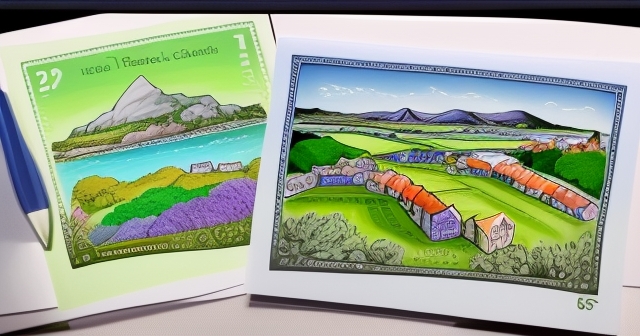
If you’re interested in understanding how such economic policies in smaller jurisdictions can offer unique perspectives compared to larger economies, or if you’re looking to explore how different economic factors can influence currency values and market dynamics, you might consider diving deeper into global financial markets. Understanding the mechanisms behind different currencies and assets is key for any aspiring trader or investor. In choosing a platform to explore various global financial instruments, including exploring various global currencies and assets,
如果你正考慮開始進行外匯交易或探索更多差價合約商品,那麼 Moneta Markets 是一個值得參考的平台。它來自澳洲,提供超過 1000 種金融商品,無論是新手還是專業交易者都能找到合適的選擇。
The GGP in Your Hand: Denominations, Circulation, and Interest
Let’s quickly recap the physical forms of the Guernsey Pound you’d encounter today, and will, alongside the new polymer notes, in the future. Understanding the denominations is fundamental for anyone using the currency, whether you’re a resident, a visitor, or simply a keen observer of different global monies.
- Coins: You’ll find coins in denominations of 1p, 2p, 5p, 10p, 20p, 50p, £1, and £2. Guernsey coins often feature unique local designs, adding to their appeal, especially the £1 and £2 coins which can showcase specific island landmarks or symbols.
- Banknotes: The current cotton paper banknotes are issued in £1, £5, £10, £20, and £50 denominations. These feature designs that often include the portrait of Queen Elizabeth II, alongside local scenes or historical figures. As mentioned, these will co-circulate with the new polymer notes starting in 2027. The £1 note is somewhat less common in daily use now compared to the £1 coin, mirroring trends seen with Sterling.
The total currency in circulation (£51m) is a key indicator, but the movement and usage of these physical notes and coins are also vital for the island’s commerce. While digital payments are increasingly prevalent, cash remains important for many transactions. For philatelists and numismatists (collectors of stamps and coins/banknotes), Guernsey’s issues are particularly interesting due to their unique designs and the island’s distinct status.
The most popular exchange rate lookup involving GGP is typically against the US Dollar (USD), likely driven by international visitors or financial interest. However, given its parity with GBP, its value effectively tracks that of Sterling against major currencies like the Euro (EUR), Japanese Yen (JPY), Swiss Franc (CHF), Canadian Dollar (CAD), Australian Dollar (AUD), and New Zealand Dollar (NZD). Understanding the mechanisms that determine exchange rates, even for a currency closely pegged to a major one like GBP, is a core concept in finance and trading.
Looking Ahead: Guernsey’s Evolving Financial Landscape
As we look towards 2027 and beyond, Guernsey is clearly engaging in a deliberate process of modernizing its currency and adjusting key economic levers. The transition to polymer banknotes is a practical step towards a more durable and secure currency, aligning with international best practices. The simultaneous decision to focus new designs purely on the island’s identity is a bold artistic and cultural statement, reinforcing Guernsey’s unique position.
Coupled with these monetary symbols are the shifts in economic policy, exemplified by the minimum wage increase. These decisions reflect the ongoing efforts of the States of Guernsey to balance social welfare goals with economic realities, responding to the needs of both workers and businesses in a dynamic environment. The debates surrounding future policy timing and comparisons with neighbouring islands underscore the careful consideration given to maintaining the island’s economic health and competitiveness.
For anyone interested in finance, economics, or even the fascinating intersection of history, art, and national identity as expressed through currency, Guernsey offers a compelling case study. The GGP’s journey, from historical ties to future polymer forms, mirrors the island’s own path of adaptation and self-definition in the modern world. Understanding these local developments can provide valuable context for appreciating the complexities of financial systems globally. As you continue to learn and navigate the world of finance, having access to diverse tools and resources is invaluable.
在選擇交易平台時,Moneta Markets 的靈活性與技術優勢值得一提。它支援 MT4、MT5、Pro Trader 等主流平台,結合高速執行與低點差設定,提供良好的交易體驗。
These are exciting times for the Guernsey Pound, and we will be watching closely as these planned changes unfold.
guernsey poundFAQ
Q:What is the Guernsey Pound?
A:The Guernsey Pound (GGP) is the official currency of Guernsey, a self-governing British Crown Dependency, and is tied closely to the British Pound Sterling.
Q:When will the new polymer banknotes be introduced?
A:The new polymer banknotes are expected to begin entering circulation in 2027.
Q:What are some key security features of the Guernsey Pound?
A:Key security features include advanced technologies like PUREIMAGE™, IGNITE®, and NEXUS™, which enhance the currency’s resistance to counterfeiting.
